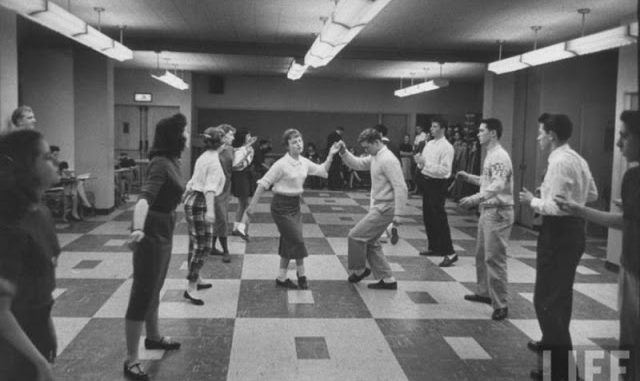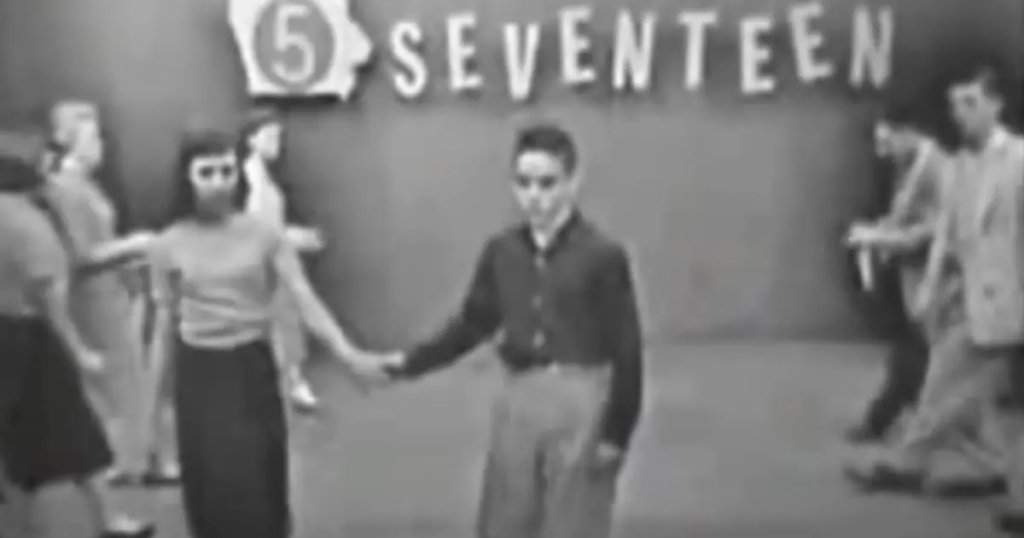
There was something gentle, something elegant, about The Stroll. It wasn’t wild like The Twist, or fast like The Pony. It didn’t make you bounce or spin out of control. Instead, The Stroll flowed—like a slow-moving train on a Saturday afternoon, carrying with it all the rhythm, romance, and charm of a different time.
And for many of us, it was our first dance.

The first time The Stroll appeared on American Bandstand, it wasn’t even planned. The dancers fell into formation almost instinctively—two lines of teens, boys on one side, girls on the other. One pair would step out, take the long walk down the middle, and show off their best moves.
No one yelled or cheered wildly. They clapped softly, swaying to the beat. It was respectful. Stylish. Classy.
And in its simplicity, deeply beautiful.
There was something romantic about it. The eye contact. The way you waited for your turn. The anticipation of walking side by side. You didn’t need to be flashy or bold. Just yourself, your timing, and a little bit of soul.

For many teenagers in the late 1950s, The Stroll was the gateway to confidence. If you were shy, you didn’t have to lead. You didn’t even have to ask someone to dance. You just lined up, smiled, and waited your turn.
And when your moment came—you walked, stepped, maybe twirled, and walked again.
You were seen. You were part of something. You mattered.
Even if just for a few beats.
At school dances, The Stroll became the moment of calm before the chaos. The band would slow things down, and kids would naturally take their place. Teachers approved of it. Parents liked it. And for those of us who weren’t built for fast, flashy moves—it was perfect.

On American Bandstand, The Stroll became something more than a dance. It became a weekly tradition. A moment where everyone took a breath. Where the camera didn’t chase excitement, but embraced grace.
Some of the most iconic couples—Justine Carrelli and Bob Clayton, Arlene Sullivan and Kenny Rossi—shined during The Stroll. But the truth is, every dancer looked good doing it. That was the beauty of it. There was no “wrong” way to stroll, as long as you moved with the music and let your heart lead the steps.
And when the song ended, we didn’t feel exhausted.
We felt connected.

Even today, when you hear a certain slow-rocking rhythm, your feet remember. Your shoulders sway without thinking. Your heart returns to that moment—maybe in a school gym, a church social, or your parents’ living room.
You remember the waiting. The walk. The smile.
The Stroll wasn’t just a dance—it was a ritual of youth, quiet but unforgettable.
And in a world that moves so fast now, maybe that’s why it still matters.
It reminds us of a time when things didn’t have to be flashy to be fun. When just taking that walk together meant something.
So go ahead—put on “C.C. Rider” or “Since I Don’t Have You.”
Stand in your living room. Take a step forward. Imagine the two lines waiting.
And stroll.
Just like you did back then.